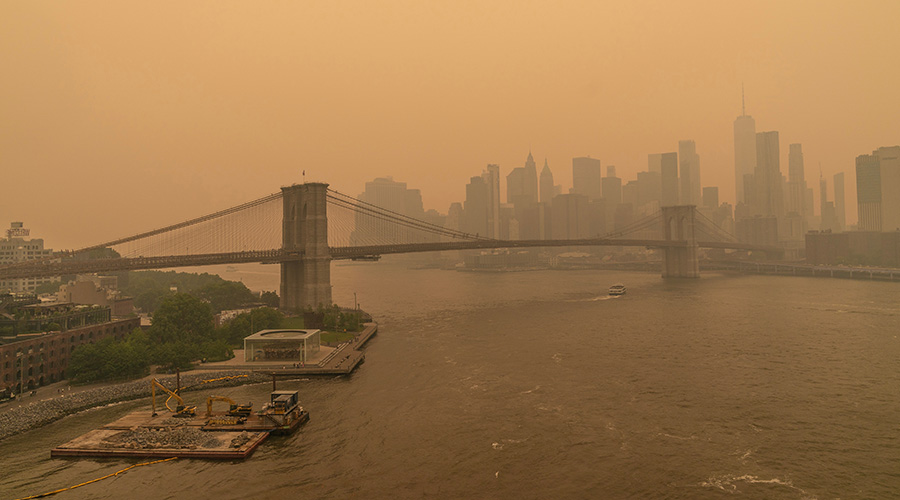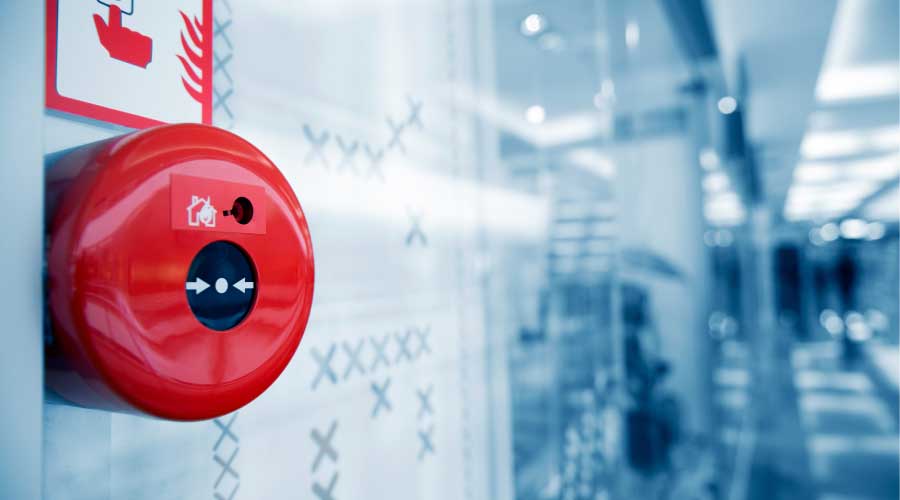Green Building Design Can Pose Fire Safety Challenges
If asked which organizations might be responsible for calling attention to fire- and life-safety concerns, most facility managers might think of the National Fire Protection Association or the International Code Council.
Few, even when pressed, would answer by naming retailing giant Target. But it seems that's just what's happening.
Due in part to an April 2009 fire in a Bakersfield, Calif., Target store, professional organizations, code writers, and fire-protection engineers are beginning to re-think the code and construction concerns for green buildings — particularly how life-safety precautions are addressed in green construction.
The fire at the Bakersfield Target started, firefighters learned, at the photovoltaic array on the building's roof. Even after the firefighters disconnected the electrical mains, they discovered that the solar panels were still energized, presenting a safety challenge in addition to the fire.
"Most firefighters will pull the meter so that power from the utility is off," says Robert Solomon, division manager for building and life safety at the National Fire Protection Association. "But often potentially powerful, potentially lethal power from PV panels or a wind turbine still works even after the utility power is disconnected."
Even if the solution to the problem were as simple as turning off the switch to the devices that deliver green power, locating and activating the switches can be problematic.
"The switch for PV panels might be on the roof of the building," says Armin Wolski, associate principal at Arup and head of the San Francisco fire engineering group. "Obviously, that presents a concern for firefighters if for some reason they need to shunt the building power."
The crux of the problem, says Wolski, is that green building designs and intent sometimes butt heads with the regular building code.
"We're seeing designs that prescriptive codes don't address or have not even considered yet," says Solomon.
New Fire Challenges
Experts are careful to caution that green building designs do not equate to increased fire- and life-safety hazards. Rather, owners of green buildings might have to be aware that the green designs can present previously unconsidered challenges that arise as a direct result of construction choices.
"The new methods and materials that are used to support green building concepts can result in specific fire hazards, just like in traditional building design," says Craig Hofmeister, vice president of engineering technology for RJA Group. "That means green concepts should be reviewed as part of a fire-protection and life-safety analysis."
Because codes — even a decade after green design concepts hit the mainstream — still largely deal with traditional building designs and materials, facility managers have to know how to address the intersection of green design and current codes.
Many experts advise facility managers responsible for new construction with green design elements to use performance-based design metrics.
"Performance-based design identifies the level of safety that is to be provided without identifying exactly how it is to be accomplished," says Chris Jelenewicz, engineering program manager at the Society of Fire Protection Engineers. "As such, performance-based design requires more engineering effort. At the same time, it results in a more efficient design based on a building's unique features."
Tricky Atriums
One of the places where code-compliance can become problematic is in atriums, according to Hofmeister.
"Uniquely configured atriums often require a more detailed smoke control analysis," he says. "Or the use of glazing for light transfer can conflict with fire-rated construction." Similarly, the use of large sunshades or similar devices may result in difficulty with sprinkler and fire alarm device placement or operation.
The solution to becoming code compliant, say experts, is to meet or exceed existing code, without necessarily adhering to the prescriptive elements of the code.
Wolski gives an example of an atrium where performance-based design was used on the Stanford campus in place of prescriptive codes. Atrium space that connects three stories typically requires a smoke-control system. That usually means a certain smoke exhaust rate is required in addition to ventilation. On Stanford's campus, the goal was to use natural ventilation methods rather than mechanical means. But, according to code, Wolski says, Stanford would still have had to buy fans to mechanize the smoke control system to meet code — even if the natural ventilation methods would have been sufficient.
The solution was to use a natural louver system at the top of the building that increased ventilation rates and met the smoke-control system code. "Smoke control was the tail that wagged the dog," Wolski says.
The Stanford smoke-control system received unusual scrutiny from both the university and Santa Clara fire marshals. The system was tested twice under separate weather conditions with heated smoke, according to Wolski, and both times it was found acceptable. For the most part, heated smoke tests are vestiges of the days before computerized fire and smoke analysis was available. Such testing is not typically required or recommended because it is not representative of a real fire nor has it been standardized, says Wolski. But in a few cases — the Stanford project, for example — heated smoke is still used to provide a "live test" of a smoke-control system. Such tests allow the investigation into whether unanticipated air flows exist in the built environment that cause smoke to flow in unpredicted directions.
The bottom line is that performance-based codes can be used as an excellent tool to resolve conflicts between progressive green design elements and prescriptive codes. "A particular design element might not comply with the letter of the code," Wolski says, "but for a given use or intent, often the element can be analyzed from a performance perspective and shown to meet the intent of the code."
That's the most important thing, say life-safety engineers and consultants: To show that green design can meet or exceed the intent of the code without necessarily using the prescriptive methods of the code.
Related Topics:













